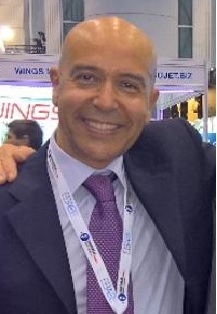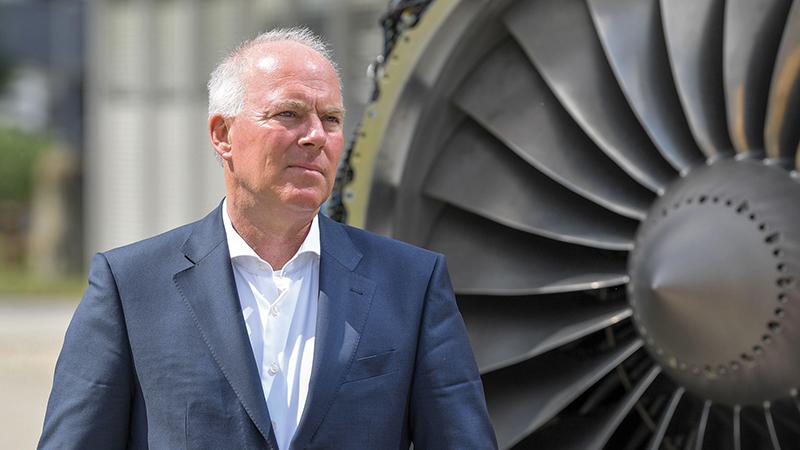MTU Aero Engines Program Head Says Europe Must ‘Think Big
Details
More Products & Services
Products & Services
Aerospace | Aviation Week Network
Aviation Week Network
https://aviationweek.com/themes/custom/particle/dist/app-drupal/assets/awn-logo.svg
Home - Aviation Group Marketing
Aviation Week Network
120 data points on over 156,000 commercial and business aviation aircraft, including military transports. Discover the most trustworthy resource for the complete aircraft history, plus ad hoc reports, month-over-month trend analysis and details on expected deliveries through 2050.
People

Andrea Rossi Prudente
Aviation Week Network

Anthony Lim
Aviation Week Network
Sales director

Becca Balmes
Aviation Week Network

Belinda Tan
Aviation Week Network

Brian Everstine
Aviation Week Network
Editor

Eddie Krankowski
Aviation Week Network
Assistant Manager, Tradeshows

erving dockery
Aviation Week Network

Lisa Tan
Aviation Week Network
Senior Marketing Manager

Mark Thomas
Aviation Week Network
Description
Michael Schreyögg, head of programs at MTU Aero Engines, sat down with Aviation Week London Bureau Chief Tony Osborne and Executive Editor for Defense and Space Robert Wall to discuss everything from defense investments to future powerplant pursuits. Excerpts follow.
AW&ST: The defense landscape in Europe has changed significantly. Is Europe now doing enough? The environment is very much different to some years ago. Europe needs more of everything. Our armed forces are understaffed and underequipped. We need more technology, more platforms, more weaponry. That's simply a consequence of the long-term reluctance, especially here in Germany, to invest in our defense.
This has changed since 2022. We see a dramatic move in our procurement organizations to become much faster, much more efficient, much more focused on what they really need. Now it's really much more like a partnership. But we have to do more. If you just look at the upcoming order of Eurofighters, Germany wants to buy 20 more Eurofighters. If I see the threat from the East, my feeling is not 20 Eurofighters but 200. Think big.
How do you see today's geopolitical situation impacting Europe's plans on future programs? In this world in which we are living, you can buy fighters or helicopters from Europe when you develop them and when you launch development programs. If you don't do this, then you can go to Russia, China or the U.S. to buy equipment. And the question is really a strategic and political question. Do you want to have this dependency on Russia and China? I think the answer is easy, but should we be also more sovereign from U.S. defense equipment? What we see today with today's administration, this might be a good idea.
And then, as a last point, we need volume. To make it sustainable and a profitable business, you need volume. And this means, besides the European demand, we need to be more active in the world. We need more support from our governments in Europe to export equipment.
Exports are definitely not purely commercial business discussions; it is political. And that's something where, at least in Germany, we are lacking the political will and the organization to support exports. Europe, and also Germany, has become much more open to military export, but there needs to be more coming. We need more resources. In the UK, you have basically an export organization. In France, we have DGA [the General Directorate for Armaments]. We need something like this also on a European level, or at least on a national level, where we are really collaborating and supporting industry to make such political deals also happen at the end.
Should that be a German-focused or European organization? For me, it's always preferred if Europe can act together. But at the end, someone has to do it. I'm very impressed by the British government about how they do it in Saudi Arabia, for example; it's really a very professional organization. If we can establish this on a European level without becoming a bureaucratic monster, yes, of course. But I would be happy also if we get support from the core nations, like on Eurofighter—Italy, Spain, Germany and UK—if we get the appropriate support to sell the aircraft.
Everyone is talking about Collaborative Combat Aircraft. What is MTU's plan? I have no clue, to be honest. We just had this discussion here. It ranges from people who come to us that have a startup and say, “I need an engine to power this.” However, they want this for a kamikaze drone. This is an engine class where I say, “This is not the size of engines which MTU can do in a cost-efficient manner.”
Then you come up with heavier versions: the loyal wingman, which requires an engine that you would see today in a business jet, for example, and that is where it starts to get interesting for us.
The question which I always have then is: “What is the volume of this program?” To develop or modify an engine for 100 units is something that cannot be cost-effective, so I wouldn't do this. And then the heavy, intelligent loyal wingman strategy of Airbus, which requires significant thrust, could be considered.
When I take a look at what is happening in Ukraine today, I think low-cost drones of high volumes are also very effective. And then you have the question: Where do you find the place for this kind of loyal wingman? Or would you just say, you have more fighters than today and then also these low-cost weapon systems?
To develop a new system, I think it's an effort. It takes time. And the question is, where do you spend your money? In the end, we will follow the customers. We will not place our own product in this market segment.
You are working with Safran on the European Military Rotorcraft Engine Alliance (EURA). Why? The strategy and the thinking are simple: We have the option to sit and wait if Airbus or others will develop something or if the customers will tell us something, or we become a bit more noisy and proactive and try to create this market.
We saw this with the heavy-lift helicopter. We had a future transport helicopter and engine aircraft program in about 2010. The development cost at the time was overseeable. But nobody was launching this program. And the end of the story is that our [Sikorsky] CH-53Gs are now close to 40 years old. To get this aircraft to fly is more restoration than maintenance. And all of a sudden, our government realized that if they want to have heavy lift and comply with NATO requirements, then they need to replace these helicopters. And you had two options—the [Boeing] CH-47, which is as old as me, or you go with the CH-53K. Both are U.S. products, and nothing was available in Europe.
This was an eye-opening moment for us. So we decided we need to try to create this market demand. Let's be more proactive. Let's create a joint venture and market this idea of a next-generation helicopter, which will need a next-generation engine. We are speaking to the European helicopter manufacturers and trying together to create this demand. Because it's obvious the [Airbus] Tiger has reached now a certain age. In 2040, the [NHIndustries] NH90 will have reached a certain age. And from 2040 onward, the European nations will need a replacement in terms of helicopters. And then we are back to square one if we are not starting this now, 15 years ahead, because that's about the time frame for technology and the project development and testing and military equipment application. I hope that the airframe side will put such a proposal together.
What is the technology plan for that turbine? Hybridization will be one of the paths—lightweight materials, additive manufactured parts. And then we have to speak to the customers. Do they want the highest performance of the engine, or do they want to have a mass product, which could be a different development stream? Do they want a mass product with the lowest cost of procurement and [to] procure more systems? In the past, we always looked to the extreme side in terms of technology and performance. But if you look now at the threat, there could also be a different customer specification, going for cheaper helicopters, cheaper engines, but buying more of them.
Germany is retiring its [Eurocopter] Tiger helicopters. Do you see a need for attack helicopters in the future? I think Europe needs an attack helicopter. The question is, how much can it be a common platform with a transport helicopter? The engine should be the same. The gearbox could be the same. The cockpit could be the same. But this is exactly the discussion where we need also the airframers, and then we need the end customer. But we are far away from a specification. But we know there's a need for rotorcraft, attack and transport, and this is what we want to address with the EURA consortium.
Industry is getting anxious about the dwindling Airbus A400M backlog and the risk of a production shutdown. When do you need customer commitments to assure the future of the line? These decisions need to be taken in 2025, and half the year is gone. What we could do is pull in orders from Spain and France, which had been pushed out in the past years. This can buy you another 12 months. And then it really comes to export orders. Why is Brussels not buying 20 aircraft for their mission? Brussels wants to become a player in defense. Europe needs to provide more airlift NATO requirements anyway. So why not buy, on a European level, 20 more aircraft, which is another two years of production? But we need to act; otherwise, Airbus is right: They need to close down. And then there is no option to open such a line again. There are 3,000 people in Seville, [Spain], and if you are not employing them, they are gone, and the experience is gone. The engine is performing very well. It's a good aircraft, so it needs to find its place in the market.
What Ukraine war lessons are you taking? We learned that a war lasts not three months, but it can be three years. You have to have a stock of spares, which we had in the Cold War, but this is an experience which we lost in the last 30 years.
We need to ramp up our capacities for maintenance. And maintenance is nothing if I don't have the spare parts on hand. I cannot go to my supplier with a lead time of six months, 12 months for the raw material, and then we have a manufacturing lead time of six months again. So this means 1 year or 1.5 years until I've got this part available. We need to have stocks available again. And this is something which is not yet implemented in the system. It needs better integrated planning, in my view, so you are not just looking at weapons, people and platforms, but also, how do you support this over a wartime of three, four or five years?
AW&ST: The defense landscape in Europe has changed significantly. Is Europe now doing enough? The environment is very much different to some years ago. Europe needs more of everything. Our armed forces are understaffed and underequipped. We need more technology, more platforms, more weaponry. That's simply a consequence of the long-term reluctance, especially here in Germany, to invest in our defense.
This has changed since 2022. We see a dramatic move in our procurement organizations to become much faster, much more efficient, much more focused on what they really need. Now it's really much more like a partnership. But we have to do more. If you just look at the upcoming order of Eurofighters, Germany wants to buy 20 more Eurofighters. If I see the threat from the East, my feeling is not 20 Eurofighters but 200. Think big.
How do you see today's geopolitical situation impacting Europe's plans on future programs? In this world in which we are living, you can buy fighters or helicopters from Europe when you develop them and when you launch development programs. If you don't do this, then you can go to Russia, China or the U.S. to buy equipment. And the question is really a strategic and political question. Do you want to have this dependency on Russia and China? I think the answer is easy, but should we be also more sovereign from U.S. defense equipment? What we see today with today's administration, this might be a good idea.
And then, as a last point, we need volume. To make it sustainable and a profitable business, you need volume. And this means, besides the European demand, we need to be more active in the world. We need more support from our governments in Europe to export equipment.
Exports are definitely not purely commercial business discussions; it is political. And that's something where, at least in Germany, we are lacking the political will and the organization to support exports. Europe, and also Germany, has become much more open to military export, but there needs to be more coming. We need more resources. In the UK, you have basically an export organization. In France, we have DGA [the General Directorate for Armaments]. We need something like this also on a European level, or at least on a national level, where we are really collaborating and supporting industry to make such political deals also happen at the end.
Should that be a German-focused or European organization? For me, it's always preferred if Europe can act together. But at the end, someone has to do it. I'm very impressed by the British government about how they do it in Saudi Arabia, for example; it's really a very professional organization. If we can establish this on a European level without becoming a bureaucratic monster, yes, of course. But I would be happy also if we get support from the core nations, like on Eurofighter—Italy, Spain, Germany and UK—if we get the appropriate support to sell the aircraft.
Everyone is talking about Collaborative Combat Aircraft. What is MTU's plan? I have no clue, to be honest. We just had this discussion here. It ranges from people who come to us that have a startup and say, “I need an engine to power this.” However, they want this for a kamikaze drone. This is an engine class where I say, “This is not the size of engines which MTU can do in a cost-efficient manner.”
Then you come up with heavier versions: the loyal wingman, which requires an engine that you would see today in a business jet, for example, and that is where it starts to get interesting for us.
The question which I always have then is: “What is the volume of this program?” To develop or modify an engine for 100 units is something that cannot be cost-effective, so I wouldn't do this. And then the heavy, intelligent loyal wingman strategy of Airbus, which requires significant thrust, could be considered.
When I take a look at what is happening in Ukraine today, I think low-cost drones of high volumes are also very effective. And then you have the question: Where do you find the place for this kind of loyal wingman? Or would you just say, you have more fighters than today and then also these low-cost weapon systems?
To develop a new system, I think it's an effort. It takes time. And the question is, where do you spend your money? In the end, we will follow the customers. We will not place our own product in this market segment.
You are working with Safran on the European Military Rotorcraft Engine Alliance (EURA). Why? The strategy and the thinking are simple: We have the option to sit and wait if Airbus or others will develop something or if the customers will tell us something, or we become a bit more noisy and proactive and try to create this market.
We saw this with the heavy-lift helicopter. We had a future transport helicopter and engine aircraft program in about 2010. The development cost at the time was overseeable. But nobody was launching this program. And the end of the story is that our [Sikorsky] CH-53Gs are now close to 40 years old. To get this aircraft to fly is more restoration than maintenance. And all of a sudden, our government realized that if they want to have heavy lift and comply with NATO requirements, then they need to replace these helicopters. And you had two options—the [Boeing] CH-47, which is as old as me, or you go with the CH-53K. Both are U.S. products, and nothing was available in Europe.
This was an eye-opening moment for us. So we decided we need to try to create this market demand. Let's be more proactive. Let's create a joint venture and market this idea of a next-generation helicopter, which will need a next-generation engine. We are speaking to the European helicopter manufacturers and trying together to create this demand. Because it's obvious the [Airbus] Tiger has reached now a certain age. In 2040, the [NHIndustries] NH90 will have reached a certain age. And from 2040 onward, the European nations will need a replacement in terms of helicopters. And then we are back to square one if we are not starting this now, 15 years ahead, because that's about the time frame for technology and the project development and testing and military equipment application. I hope that the airframe side will put such a proposal together.
What is the technology plan for that turbine? Hybridization will be one of the paths—lightweight materials, additive manufactured parts. And then we have to speak to the customers. Do they want the highest performance of the engine, or do they want to have a mass product, which could be a different development stream? Do they want a mass product with the lowest cost of procurement and [to] procure more systems? In the past, we always looked to the extreme side in terms of technology and performance. But if you look now at the threat, there could also be a different customer specification, going for cheaper helicopters, cheaper engines, but buying more of them.
Germany is retiring its [Eurocopter] Tiger helicopters. Do you see a need for attack helicopters in the future? I think Europe needs an attack helicopter. The question is, how much can it be a common platform with a transport helicopter? The engine should be the same. The gearbox could be the same. The cockpit could be the same. But this is exactly the discussion where we need also the airframers, and then we need the end customer. But we are far away from a specification. But we know there's a need for rotorcraft, attack and transport, and this is what we want to address with the EURA consortium.
Industry is getting anxious about the dwindling Airbus A400M backlog and the risk of a production shutdown. When do you need customer commitments to assure the future of the line? These decisions need to be taken in 2025, and half the year is gone. What we could do is pull in orders from Spain and France, which had been pushed out in the past years. This can buy you another 12 months. And then it really comes to export orders. Why is Brussels not buying 20 aircraft for their mission? Brussels wants to become a player in defense. Europe needs to provide more airlift NATO requirements anyway. So why not buy, on a European level, 20 more aircraft, which is another two years of production? But we need to act; otherwise, Airbus is right: They need to close down. And then there is no option to open such a line again. There are 3,000 people in Seville, [Spain], and if you are not employing them, they are gone, and the experience is gone. The engine is performing very well. It's a good aircraft, so it needs to find its place in the market.
What Ukraine war lessons are you taking? We learned that a war lasts not three months, but it can be three years. You have to have a stock of spares, which we had in the Cold War, but this is an experience which we lost in the last 30 years.
We need to ramp up our capacities for maintenance. And maintenance is nothing if I don't have the spare parts on hand. I cannot go to my supplier with a lead time of six months, 12 months for the raw material, and then we have a manufacturing lead time of six months again. So this means 1 year or 1.5 years until I've got this part available. We need to have stocks available again. And this is something which is not yet implemented in the system. It needs better integrated planning, in my view, so you are not just looking at weapons, people and platforms, but also, how do you support this over a wartime of three, four or five years?

Share
Recent Chats
Share via email
Future: handle WhatsApp here
Future: handle LinkedIn here
Future: handle Twitter here
SUBMENU HERE
Share via Chat
Copy Link

